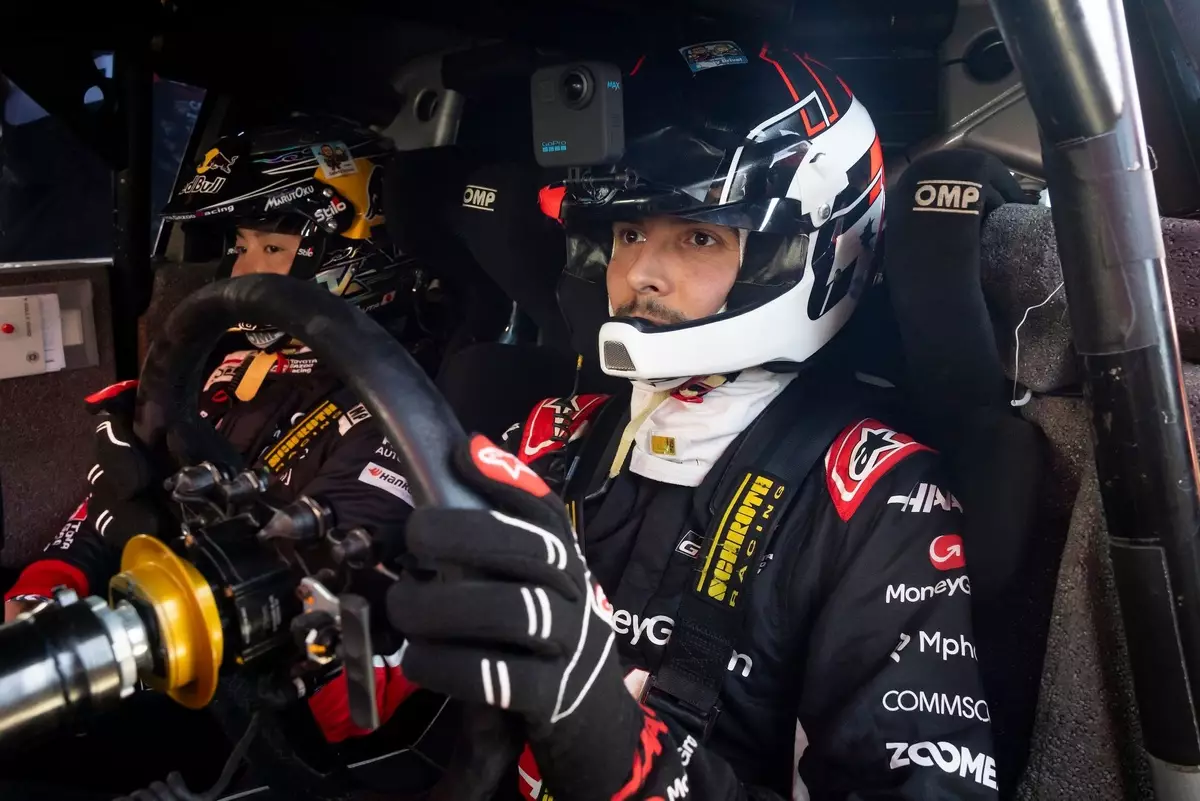Esteban Ocon’s recent experience at the Goodwood Festival of Speed signals more than just a fleeting excitement—it embodies the growing crossover between different realms of motorsport and highlights a broader desire among drivers to pursue their authentic passions. For Ocon, this event was not merely about showcasing his talent; it was an emotional milestone where childhood dreams intersected with professional achievement. His drive in the Toyota GR Yaris Rally1 car symbolizes a significant step in illustrating that even the most specialized athletes harbor a latent, fervent curiosity about other disciplines. This moment magnifies the importance of maintaining a sense of wonder and adventurous spirit amid the high-pressure world of Formula 1 racing.
Esteban’s enthusiasm was palpable, transformed into tangible action by a collaboration that seemingly originated from genuine relationships beyond contractual obligations. The secret kept from him until the last minute added a layer of suspense, making the experience deeply personal and memorable. His candid recounting underscores how much this opportunity meant to him—highlighting that the essence of racing transcends individual categories, uniting enthusiasts through shared adrenaline and craftsmanship.
The Power of Partnerships and Their Unexplored Depths
Haas’s alliance with Toyota remains a story of untapped potential. While on the surface it appears as a strategic technical collaboration, its deeper significance lies in fostering human connections that fuel individual passions. Ocon’s story reveals a partnership not just about engineering or sponsorship, but also about empowering drivers to explore new frontiers. The fact that Toyota’s boss, Akio Toyoda, personally supported this initiative emphasizes how leadership in motorsport can inspire innovation and personal growth.
This partnership exemplifies how multi-disciplinary collaborations can yield unexpected benefits. By giving Ocon a chance to experience rallying—a discipline distinct yet deeply connected to racing—Toyota subtly bridges the gap between different forms of motorsport. Such cross-pollination could lay the foundation for future initiatives where drivers are encouraged to broaden their expertise, thus enriching their skills and perspectives. This approach holds promise not only for individual careers but also for the evolution of motorsport as a whole.
The Allure of Rallying and Its Underestimated Precision
Ocon’s enthusiasm for rallying shines a light on an often underappreciated facet of motorsport: its raw engineering and refined driver skill. His admiration for the car’s engineering excellence demolishes the misconception that rally cars are merely rugged tools for rough terrains. Instead, he describes the Rally1 car as a finely tuned piece of machinery, highlighting that rallying demands a level of precision comparable to or even exceeding that of Formula 1.
What makes rallying uniquely appealing is the combination of technical mastery and adaptability it requires—factors that Ocon perceptively recognizes. His observation of the car’s handling characteristics, especially the smooth steering and intuitive handbrake, reveals an awareness of the sophisticated design behind rally vehicles. Together with his admiration for the car’s engineering, it’s clear that rallying is an art form deserving of greater respect among mainstream motorsport audiences.
From Dreamer to Potential Rallier: The Future Ahead
The most compelling aspect of Ocon’s journey is not merely his excitement but the possibility of future endeavors in rallying. His openness to testing the waters for fun, beyond the bounds of professional competition, embodies a healthy curiosity that could reshape perceptions about driver versatility. His candid declaration that he might pursue rallying as a hobby after his F1 career illustrates how genuine enthusiasm can lead to new pathways, challenging the conventional notions of specialized career trajectories.
This perspective encourages young drivers and Motorsport fans alike to embrace diverse experiences. Such cross-disciplinary pursuits can deepen understanding of vehicle dynamics, increase adaptability, and foster innovation. While Ocon dismisses the idea of competing in the top Rally1 class professionally, his willingness to explore rallying recreationally points to a broader cultural shift: one where curiosity and personal fulfillment are valued as highly as competitive success.
Reimagining Motorsport as a Converging Universe of Passion
Ocon’s rally experience exemplifies a broader trend—motorsport is increasingly becoming a confluence of disciplines, each enriching the other. The old siloed view of racing categories is giving way to a more interconnected landscape where drivers, engineers, and fans recognize the value of exploring different facets of the sport. Such versatility not only enhances individual skill sets but also invigorates the industry with innovative ideas and fresh narratives.
This narrative underscores that the true essence of motorsport lies in discovery, craftsmanship, and the relentless pursuit of excitement. Ocon’s journey from childhood admiration to real-world experience illustrates a powerful message: staying curious and open-minded is essential to growth, not just as a driver but as a passionate enthusiast of the sport. Ultimately, moments like these inspire a renewed respect for the artistry behind racing machines—whether on roads or gravel—and affirm that the spirit of adventure remains at the core of all motorsport endeavors.


Leave a Reply